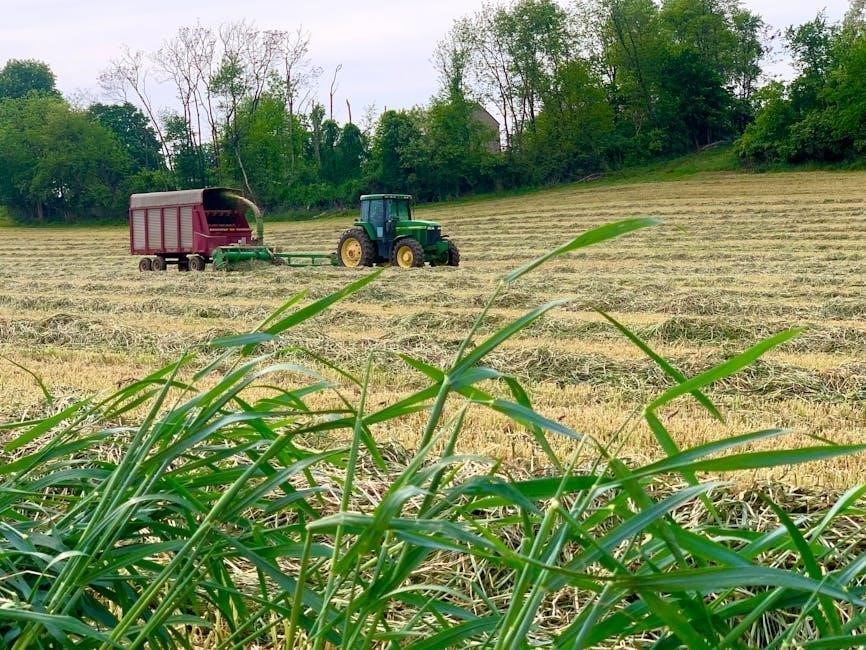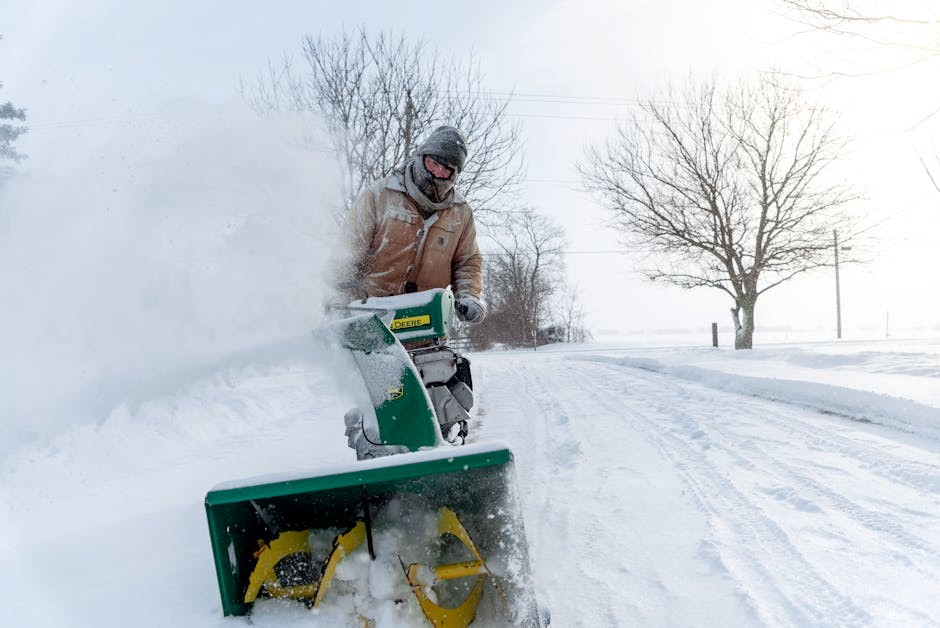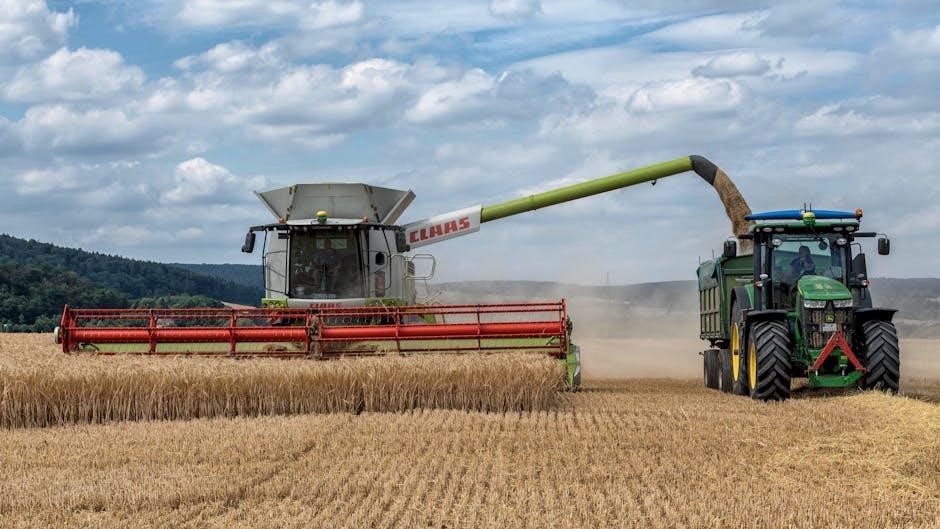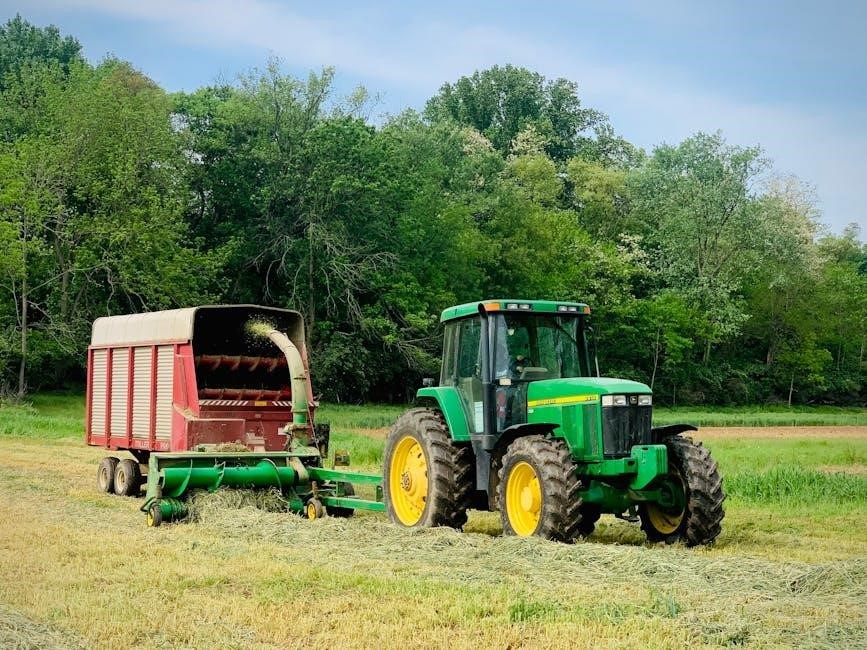john deere 7000 planter manual
The John Deere 7000 Planter Manual is a comprehensive guide for operating, maintaining, and troubleshooting the planter. It covers safety, setup, and advanced features, ensuring optimal performance and longevity.
Overview of the John Deere 7000 Planter
The John Deere 7000 Planter is a high-efficiency, six-row planter designed for precision and durability. Available in both drawn and folding configurations, it offers versatility for various farming operations. Equipped with Max-Emerge technology, it ensures accurate seed placement, enhancing yield potential. Suitable for crops like corn, soybeans, and others, this planter is built to handle demanding conditions, making it a reliable choice for farmers seeking consistent performance and adaptability in different field environments.
Importance of the Manual for Effective Planter Operation
The John Deere 7000 Planter Manual is essential for maximizing efficiency and ensuring safe operation. It provides detailed instructions for assembly, calibration, and maintenance, helping users avoid costly errors. The manual also offers troubleshooting tips and guidance on optimizing planter performance, which are crucial for achieving accurate seed placement and high yields. By following the manual’s guidelines, operators can extend the planter’s lifespan and maintain its reliability, making it a vital resource for both experienced farmers and newcomers to agriculture.

Safety Guidelines and Precautions
Regular maintenance is crucial for the John Deere 7000 Planter’s longevity. Inspect and clean row units, check seed meters, and lubricate moving parts. Replace worn components promptly. Schedule annual servicing before planting and after long periods of use. Refer to the manual for detailed procedures and intervals to ensure optimal performance and durability. Proper care prevents breakdowns and maintains planting accuracy, ensuring higher yields and operational efficiency throughout the season. Follow guidelines for off-season storage to protect equipment from environmental damage and prolong its service life. Consistent upkeep guarantees reliable operation and maximizes the planter’s productivity. Always adhere to the manufacturer’s recommendations for best results.
General Safety Tips for Operating the Planter
Always wear protective gear, including gloves, safety glasses, and a hat. Ensure the planter is properly attached to the tractor. Avoid loose clothing that could get caught. Keep bystanders away during operation. Never leave the planter unattended while in use. Be cautious of uneven terrain and obstacles. Follow all safety guidelines in the manual. Ensure proper lighting for visibility. Keep emergency contact information handy. Regularly inspect equipment for damage or wear. Avoid overreaching or standing in unstable positions. Follow shut-down procedures before servicing. Stay alert and avoid distractions while operating. Proper training is essential for safe and effective use of the planter.
Emergency Procedures and First Aid
In case of an emergency, immediately shut off the engine and disconnect the planter from the tractor. Ensure all moving parts have stopped before approaching. For injuries, apply direct pressure to control bleeding and seek medical help. Keep a first aid kit accessible. If someone is pinned, do not attempt to move them unless absolutely necessary. Contact emergency services promptly. Stay calm and follow the manual’s emergency guidelines. Always have a phone nearby for quick communication; Ensure at least one person in the area is trained in first aid. Regularly inspect the first aid kit and restock as needed.
Protective Equipment and Apparel Recommendations
When operating the John Deere 7000 Planter, wear appropriate protective gear to ensure safety. A hard hat, safety glasses, and gloves are essential to protect against flying debris or mechanical hazards. Steel-toe boots are recommended to prevent foot injuries. Additionally, wear long sleeves and pants to minimize skin exposure. Use a dust mask when working in dusty conditions to avoid respiratory issues. Earplugs are advised when operating near loud machinery. Always ensure protective apparel is in good condition and readily available. Refer to the manual for specific recommendations tailored to planter operations.

Preparing the Planter for Use
Ensure proper assembly, initial setup, and calibration for optimal performance. Conduct pre-planting checks and adjustments to guarantee accurate seed placement and machine efficiency; Follow safety guidelines strictly.
Assembly and Initial Setup of the Planter
The John Deere 7000 Planter requires careful assembly and setup to ensure proper function. Begin by verifying all components are included and undamaged. Follow the manual’s step-by-step instructions for attaching row units, seed meters, and other essential parts. Ensure the frame is securely assembled and all bolts are tightened to the specified torque values. Proper alignment of the planter’s rows and frames is critical for accurate seed placement. After assembly, perform a visual inspection to confirm everything is correctly installed and functioning as intended before moving to calibration and testing.
Calibrating the Planter for Optimal Performance
Calibrating the John Deere 7000 Planter ensures precise seed placement and optimal performance. Start by adjusting the seed meter to match the desired population rate, using the manual’s calibration chart. Test the meter by counting seeds over a measured distance and fine-tune as needed. Set the planter’s speed and row spacing according to crop requirements. Perform a test run in the field to verify seed spacing and depth. Regular calibration ensures uniform germination and maximizes yield potential. Always refer to the manual for specific settings and procedures tailored to your crop type and planting conditions.
Pre-Planting Checks and Adjustments
Before planting, inspect the planter thoroughly. Check seed meters for proper alignment and ensure disk openers are clean and free of debris. Verify tire pressure matches soil conditions to maintain consistent depth control. Inspect row units for wear or damage, and replace components as needed. Ensure the planter frame and hitch are properly aligned with the tractor. Test all hydraulic and electrical connections for leaks or damage. Adjust seed depth and spacing according to soil type and crop requirements. Finally, lubricate moving parts and ensure all safety features are functional. These steps ensure smooth operation and accurate seed placement.

Operating the John Deere 7000 Planter
Operating the John Deere 7000 Planter involves attaching it to a tractor, using the control console for precise seed placement, and folding it for transport, ensuring efficient and accurate planting.
Attaching the Planter to the Tractor
Attaching the John Deere 7000 Planter to a tractor requires careful alignment of the hitch and connection of hydraulic lines. Ensure the tractor and planter are on level ground for stability. Secure the planter using the tractor’s three-point hitch system, following the manual’s guidelines. Connect the hydraulic and electrical lines properly to ensure precise control. Double-check all connections before operation. Always refer to the manual for specific tractor compatibility and attachment procedures to guarantee safe and effective planting operations. Proper attachment ensures optimal performance and reduces the risk of mechanical issues during use.
Using the Control Console for Precision Planting
The control console of the John Deere 7000 Planter is designed for precise seed placement and efficient operation. It allows users to set seed rates, monitor planter performance, and adjust settings in real-time. The console features a user-friendly interface with clear displays for seed population, row engagement, and system diagnostics. Operators can input field-specific data to optimize planting accuracy. Advanced features like section control help reduce overlap and waste. Always refer to the manual for detailed instructions on calibrating and utilizing the console’s functions to achieve maximum planting efficiency and ensure consistent crop yields;
Folding and Transporting the Planter
Folding and transporting the John Deere 7000 Planter requires careful attention to ensure safety and equipment protection. The planter is designed to fold into a compact position for easy transport, reducing its width for road compliance. Always follow the manual’s step-by-step folding procedure to avoid damage. Ensure all rows are securely locked, and hydraulic systems are properly engaged before moving. Use the transport lock to stabilize the frame during transit. Adhere to weight and height restrictions, and ensure the tractor is appropriately configured for towing. Proper folding and transport practices protect the planter and ensure safe relocation between fields.
Maintenance and Troubleshooting
The John Deere 7000 Planter Manual provides detailed maintenance schedules, troubleshooting guides, and repair procedures to ensure optimal performance and longevity of the planter.
Routine Maintenance Procedures
The John Deere 7000 Planter Manual emphasizes regular maintenance to ensure optimal performance. Key tasks include lubricating moving parts, checking seed meters, and inspecting planter chains for wear. The manual provides detailed schedules and guidelines for these procedures, ensuring proper functionality. Additionally, it recommends inspecting hydraulic systems and row units for any damage or blockages. By following these routines, operators can prevent potential issues and extend the lifespan of the planter. Proper maintenance is critical for achieving accurate seed placement and maximizing yield potential.
Common Issues and Troubleshooting Tips
The John Deere 7000 Planter Manual addresses common issues such as inconsistent seed placement, mechanical wear, and blockages. Troubleshooting tips include checking seed meters for damage, ensuring proper calibration, and clearing debris from row units. Regular lubrication of chains and inspecting hydraulic lines for leaks are also recommended. The manual provides step-by-step solutions for addressing these problems, ensuring minimal downtime. By following these guidelines, operators can quickly resolve issues and maintain efficient planting operations. Proper troubleshooting is essential for achieving consistent results and maximizing the planter’s performance.

Specifications and Technical Details
Explore the detailed specifications and technical features of the John Deere 7000 Planter, including row configurations, capacities, and advanced options for optimal planting performance.
Row Configurations and Capacities
The John Deere 7000 Planter offers versatile row configurations, including 4 to 12 rows in narrow (30-inch) spacing and optional wider spacings for diverse cropping needs. With capacities tailored for efficient seed and fertilizer distribution, it ensures precise planting across various field conditions. The planter supports different row units, such as MaxEmerge, to enhance seeding accuracy and adaptability. Additionally, its robust design allows for higher seed and fertilizer capacities, making it suitable for large-scale agricultural operations while maintaining optimal performance and productivity in challenging environments. This flexibility ensures the planter meets the demands of modern farming practices effectively.
Advanced Features and Optional Upgrades
The John Deere 7000 Planter is equipped with advanced features like the MaxEmerge row units, which enhance seed placement accuracy and reduce seed waste. Optional upgrades include a fertilizer attachment bar for simultaneous seeding and fertilizing, improving efficiency. The planter also supports precision agriculture technologies, such as seed monitors and variable rate controls, for optimized planting. Additionally, users can integrate advanced control systems, like the John Deere control console, for real-time monitoring and adjustments. These features, along with optional row unit upgrades, ensure the planter adapts to evolving farming needs, delivering superior performance and productivity in various field conditions.
